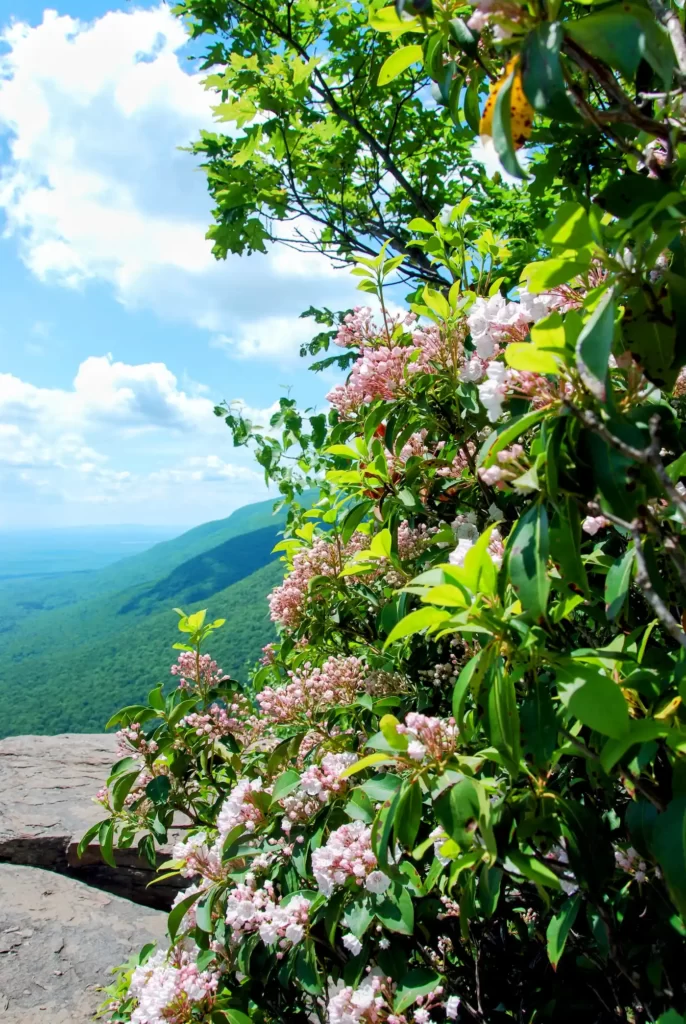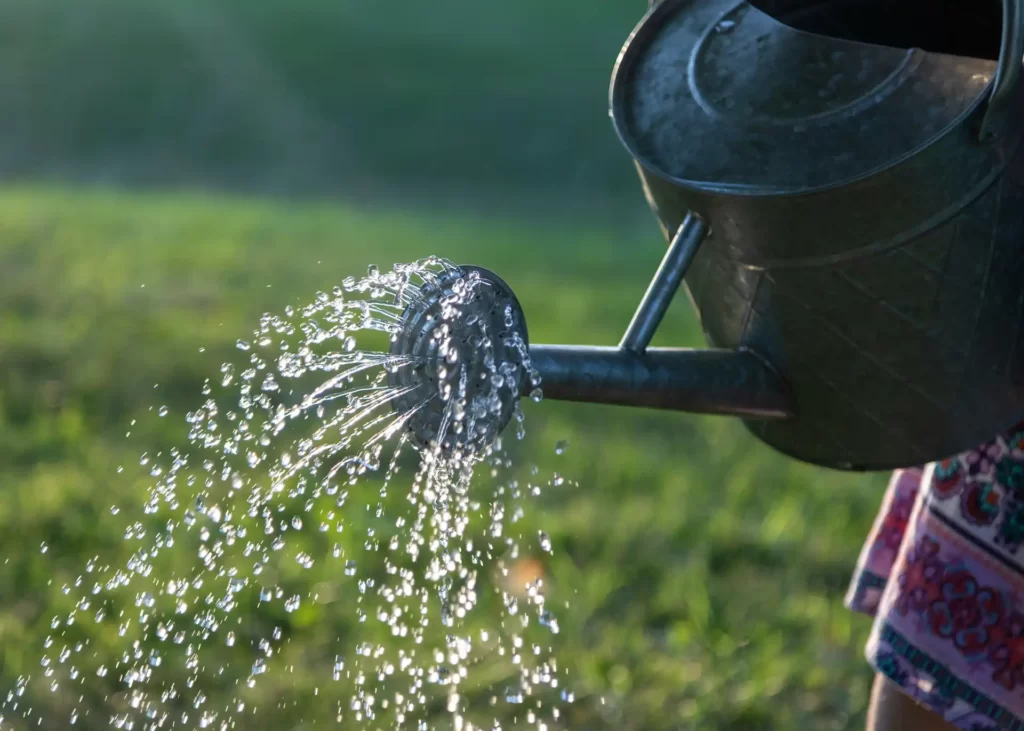The Surprising Truth About Watering Mountain Laurels: What You’re Doing Wrong
You think you know how to water your mountain laurel, right? Hose it down like the roses, a little sprinkle every other day – that kinda thing? Well, that approach could be sending your beautiful shrub straight to plant heaven. See, mountain laurels ain’t like your typical thirsty flowers. They’re tough mountain folk, used to rocky slopes and the occasional dry spell. Overwatering is actually your biggest enemy with these guys. So yeah, time to ditch those old watering habits!
The Perils of Overwatering: A Scientific Breakdown
Okay, I know it sounds weird, but you can actually drown your mountain laurel with too much water. Those tough little guys are from the mountains, not the swamp! They actually prefer things a bit on the dry side. But here’s the science-y part: too much water basically chokes their roots, inviting all sorts of nasty stuff like root rot (yuck!) and weird fungus problems. It can even mess up how they use nutrients in the soil, sorta like how we can’t breathe and eat at the same time.
- Root Rot and Fungal Diseases: Think of it like leaving your sneakers to soak in a bucket instead of letting ’em dry out. Nasty, right? Same goes for mountain laurel roots. Soggy soil is a party for rot (gross, I know) and that basically destroys the plant from the ground up. Plus, a weakened plant is a magnet for all sorts of fungal diseases – kinda like how we get sick easier when we’re run down.
- Iron Deficiency: Even if there’s plenty of iron in the ground, waterlogged soil mucks up how the plant uses it. It’s like, the iron’s there, but the roots can’t grab it. That leads to yellowing leaves, which ain’t pretty AND messes with their overall health.
Watering Practices for Thriving Mountain Laurels
So, how do you actually make ’em happy? It’s about understanding what they LIKE:
- Ensuring Proper Drainage: Think of rocky mountain slopes, not a bog. Mix some chunky stuff like bark into the soil when planting, which helps it drain fast.
- Deep and Infrequent Watering: Drench the roots well, but then let the soil DRY OUT on top before doing it again. Poke a finger in, or get one of those fancy moisture meters if you’re unsure.
- Utilizing Natural Rainfall: Nature knows best, right? If it’s been raining good, leave ’em alone. Only water if it’s been dry for over a week or so – these plants are tough!
The Secret to Happy Laurels: “Deep and Infrequent” for Flourishing Flowers!
Okay, here’s the trick to keeping your mountain laurel a happy camper: it’s all about giving those roots what they really want. Think of how those guys grow in the wild – rocky hillsides, a good downpour, then some time to dry out. You gotta recreate that in your garden!
- Soil Conditions – The Foundation for Drainage: These shrubs hate soggy feet! If your soil’s kinda heavy, mix in some chunky stuff – compost, bark, whatever – to help water drain fast. Don’t make it a mud pit!
- Deep Soakings – Targeted Hydration: Forget those little sprinkles you give other flowers. When you water a mountain laurel, you gotta soak it good, like a big summer thunderstorm. Those roots stretch deep, so get the water down there! One of those fancy moisture meters helps, or just stick your finger in good.
- Soil as Your Guide – Prevent Overwatering: Here’s the easy test: poke your finger into the soil a couple of inches. Dry as dust? Time to water. Still a bit damp? Leave it alone! These plants like to dry out between drinks.
- Utilizing Natural Resources: The thing is, mountain laurels are surprisingly tough once they get settled in. If the rain’s been decent, they likely don’t need you fussing over them. Only step in with the hose if it’s been seriously dry for a week or two, and that soil is bone dry.
Additional Best Practices:
- Mulching Benefits: Toss some bark chips or pine needles around the base – keeps the ground from drying out too fast, and weeds down too. Bonus!
- Morning Watering – Reduces Disease Risk If you gotta water, do it in the morning so the leaves dry off before night. Cuts down on those pesky fungus problems!
See, it ain’t rocket science! Treat your mountain laurel with a little understanding, and those blooms will knock your socks off.
Signs Your Laurel is in Trouble: Troubleshooting Watering Woes
Mountain laurels are remarkably resilient but will subtly signal when their watering needs aren’t being met. Understanding these cues is key to timely intervention.
Overwatering: The Dreaded Yellowing & Droop
- Yellowing Leaves (Chlorosis): While iron deficiency can be an underlying culprit, yellowing leaves are often the first sign of overwatering. This occurs due to poor root function and impaired nutrient uptake in waterlogged soil. The yellowing may appear between leaf veins while the veins remain green, a characteristic pattern of iron deficiency.
- Wilting & Drooping: Intuitively, one might associate wilting with underwatering. However, saturated soil and compromised root systems also lead to visible wilting.
- Soft, Mushy Stems: Severe cases of overwatering may cause stems to become soft and mushy. These signals advanced root rot, a potentially fatal condition for the plant.
Under watering: Dryness, Dropping & Disappointment
- Leaf Curl & Dryness: Under watered mountain laurels often exhibit leaf curling or puckering along the edges. The leaves may also become brittle and dry to the touch.
- Leaf Drop: Prolonged drought stress can cause leaves to yellow and drop prematurely. This is the plant’s attempt to conserve limited resources.
- Stunted Growth: Insufficient water hampers a plant’s ability to thrive. You may notice limited new growth, lack of vigor, and poor flowering during periods of inadequate watering.
What To Do: Steps To Take
- Assess Soil Moisture: Before anything, thoroughly check the soil moisture at the root zone (6-8 inches deep). This will provide the most reliable indication of whether your suspicions are accurate.
- Adjusting Watering Regimen: If overwatering is the culprit, allow the soil to dry out significantly before watering again. For underwatering, provide a thorough, deep soak. Pay attention to the guidance in section 3 to ensure you’re establishing a healthier watering pattern moving forward.
- Address Severe Issues: If you suspect severe root rot from overwatering, you may need to carefully remove the plant from its location to assess the damage. Diseased portions of the root system need to be pruned away, and the plant should be repotted or relocated to an area with improved drainage.
Remember: Early intervention is always best! Keep a watchful eye on your mountain laurel to catch any signs of distress and adjust your watering practices accordingly.












